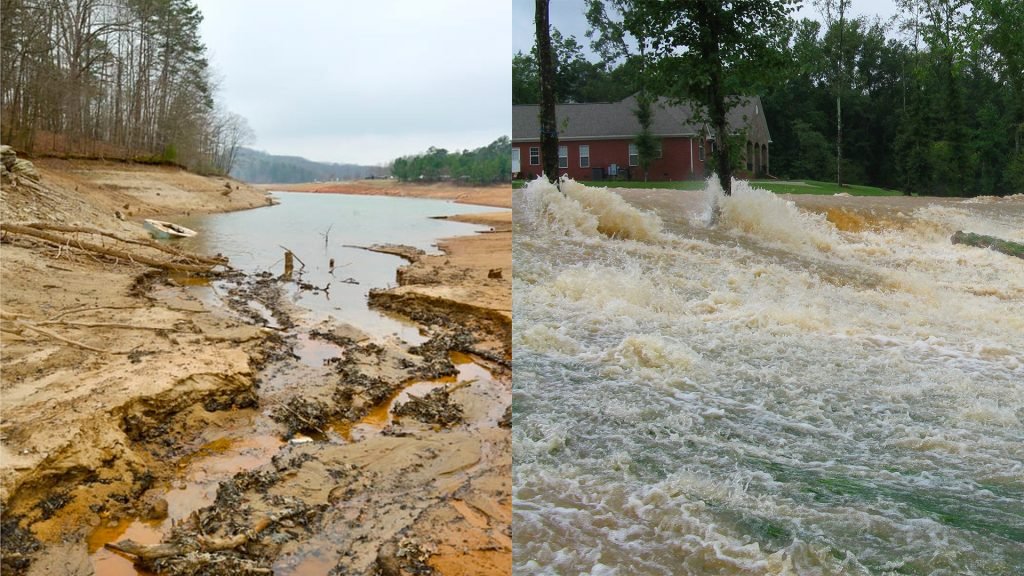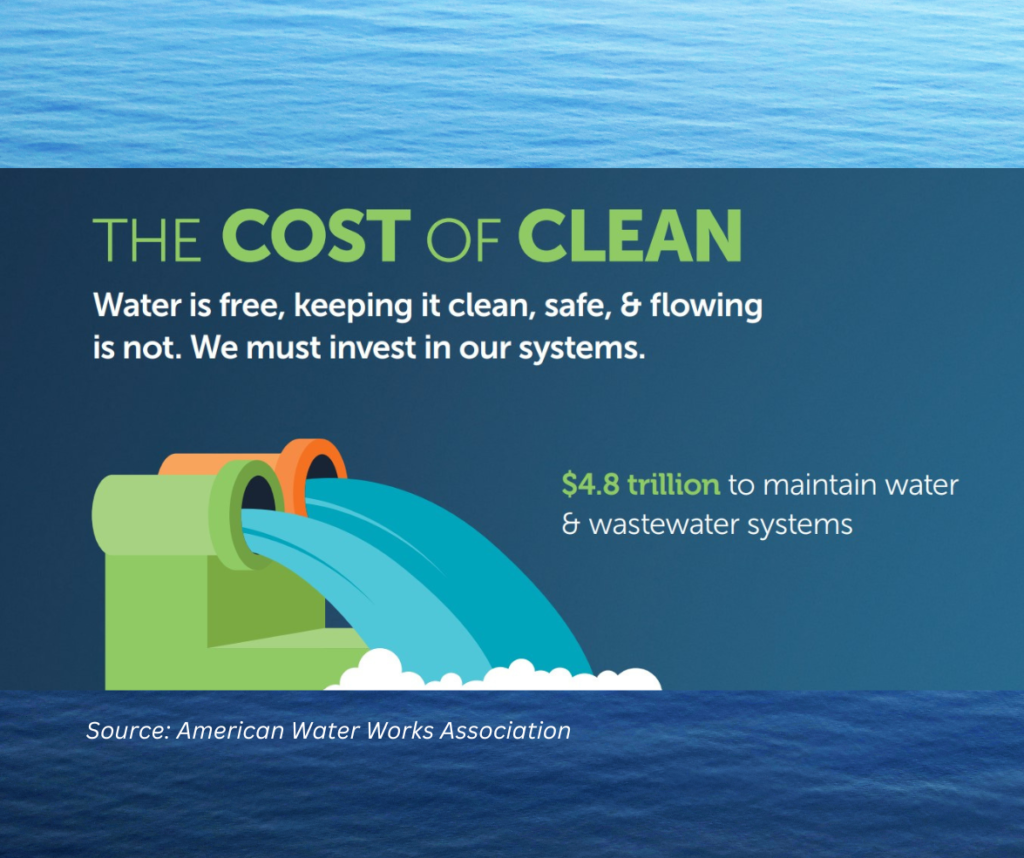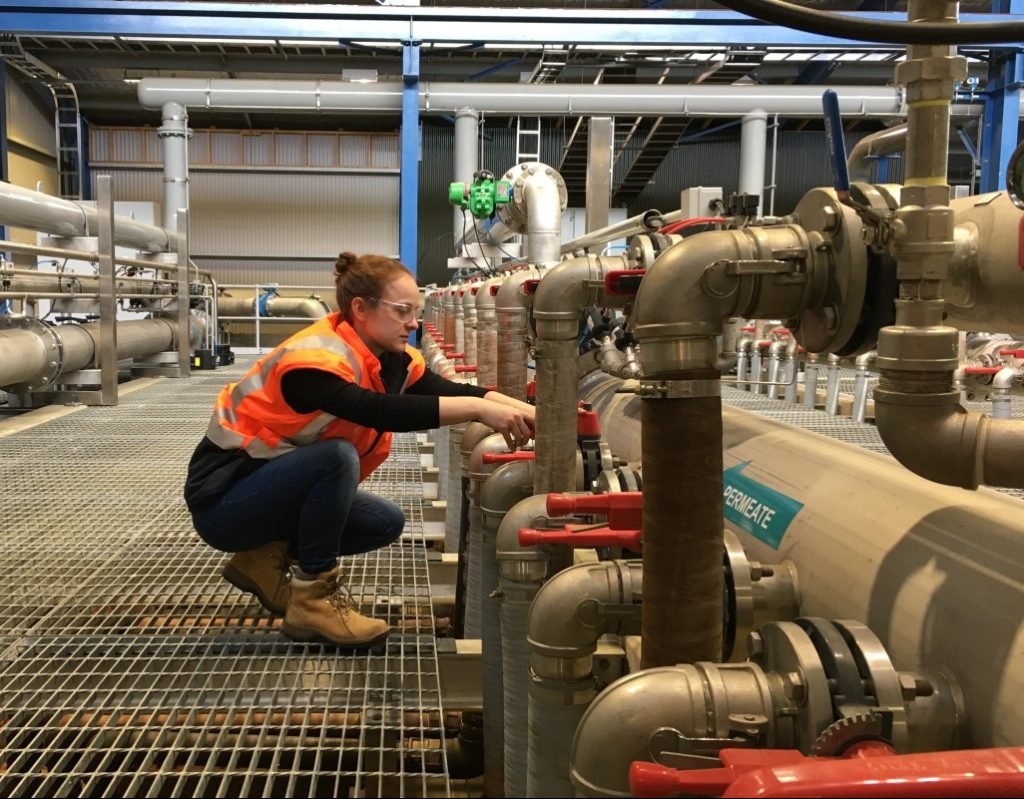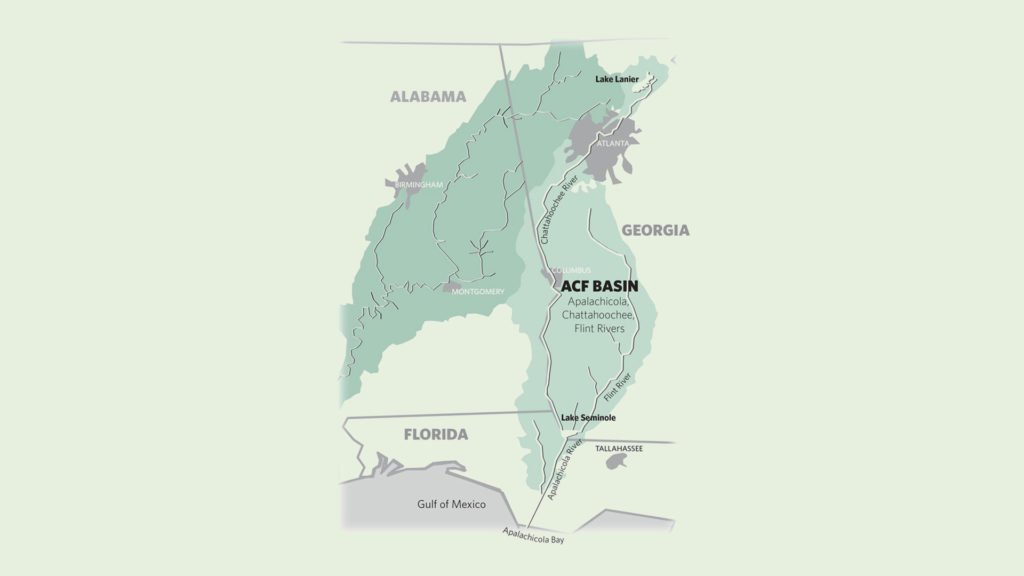Water Stats
Current Status
Water levels, monthly rainfall, and more!
Our region relies on six major river basins where natural surface water sources are relatively small and in need of constant protection.
Population growth in the region increases demands on available water supplies. At the same time, development associated with this growth impacts watersheds by changing the amount, timing, and quality of stormwater runoff.
Recent droughts have constrained water availability, and some communities have experienced low reservoir levels. Drought preparedness and response planning are important to mitigating adverse impacts and ensuring reliable water supplies. Climate variability projections indicate that future droughts and floods may become more frequent and severe in our region.

Water resources and infrastructure are integrally connected. The infrastructure that conveys water, wastewater, and stormwater throughout our region is part of the human water cycle and is a critical component of safe and healthy communities.
Utilities must balance infrastructure needs, such as repairs and new construction, with customer bill impacts. Delaying infrastructure updates raises costs and risks for citizens.
The American Society of Civil Engineers issues an annual scorecard that rates the condition of each state’s infrastructure. In the 2019 report, the state of Georgia received a B- for Drinking Water, D- for Wastewater and C- for Stormwater. Clearly, there is more work to be done.
We collaborate with regional leaders to support planning and investment in projects addressing these needs, while raising awareness among community and business leaders about the significance of investing in our water resources and systems. Water infrastructure should receive equal attention as transportation and schools due to its importance for public health, safety, and businesses.

Just as consumers are paying more for groceries, gas, and other goods and services, water utilities are paying more for supplies, equipment, and labor. As the costs for chemicals, fuel and materials increase so must water rates to pay for it.
Over the past several decades the cost of providing the public with safe, reliable water services has risen. Communities face challenges maintaining and upgrading aging infrastructure, complying with ever-more-strict regulatory mandates, addressing increasingly complex water quality issues related to nutrients and emerging contaminants, and improving system resilience to climate change and extreme weather. While investments to address the challenges are necessary, rising costs are putting an increasing strain on households across the nation as utility rates are projected to increase by approximately 4% per year from 2022 through 2026.

Water utilities are projected to lose from 30 to 50 percent of their workforce to retirement over the next decade. Operating and maintaining a water system requires many people with different areas of expertise working in concert to deliver a safe product and provide effective service to a community.
The Georgia Association of Water Professionals has developed the H2Opportunity program and resources to help those interested in exploring a rewarding career in water.

While utilities work to deliver high quality water, they are battling contaminants getting into water sources which are more difficult to treat. Effective stormwater management is critical to protect water quality.
Despite marked improvement in stormwater management, more than 1,500 miles of stream within the region do not meet state water quality standards, primarily due to non-point source pollution caused by rainfall runoff that picks up and carries away natural and human-made pollutants, ultimately depositing them into lakes, rivers, wetlands, coastal waters and ground waters.
The Metro Water District evaluates a wide spectrum of management strategies to develop a comprehensive regional program that protects our water quality and promotes watershed health.

During the 1980s, the state of Georgia, the Atlanta Regional Commission (ARC), the U.S. Army Corps of Engineers (USACE), the U.S. Environmental Protection Agency, and others collaborated on a multi-year study looking at how metro Atlanta communities should meet their water supply needs. This study concluded that the most environmentally sensitive and cost-effective solution was for metro Atlanta communities to use water stored in Lake Lanier and Allatoona Lake.
The “Tri-State Water Wars Litigation” began in 1990, when Alabama sued the USACE to prevent it from finalizing this plan. Georgia and Florida later joined the litigation.
In April 2021, the U.S. Supreme Court ruled in Georgia’s favor in the long-running Florida v. Georgia litigation over water apportionment.
